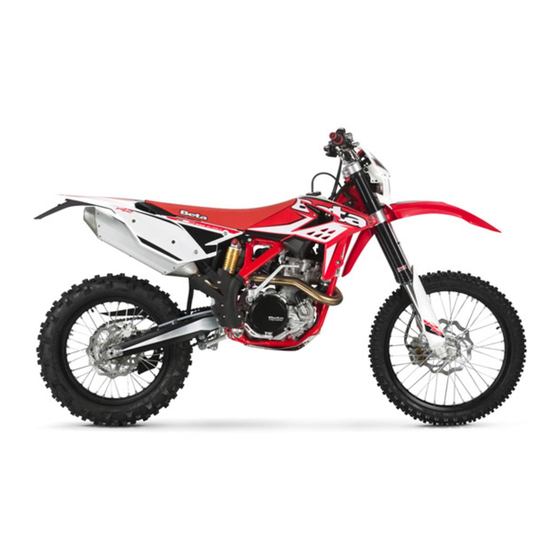
Beta RR 350 Owner's Manual
Hide thumbs
Also See for RR 350:
- Owner's manual (79 pages) ,
- Owner's manual (76 pages) ,
- Operating instructions manual (392 pages)
Table of Contents
Advertisement
RR 350 - 400 - 450 - 498
Thanks for you preference, and have a good time! This hand-
book contains the information you need to properly operate and
maintain your motorcycle.
The data and specifi cations provided in this manual does not constitute an
engagement on the part of BETAMOTOR S.p.A. BETAMOTOR reserves the
right to make any changes and improvements to its models at any moment
and without notice.
GB
1
Advertisement
Chapters
Table of Contents
Troubleshooting

















Need help?
Do you have a question about the RR 350 and is the answer not in the manual?
Questions and answers